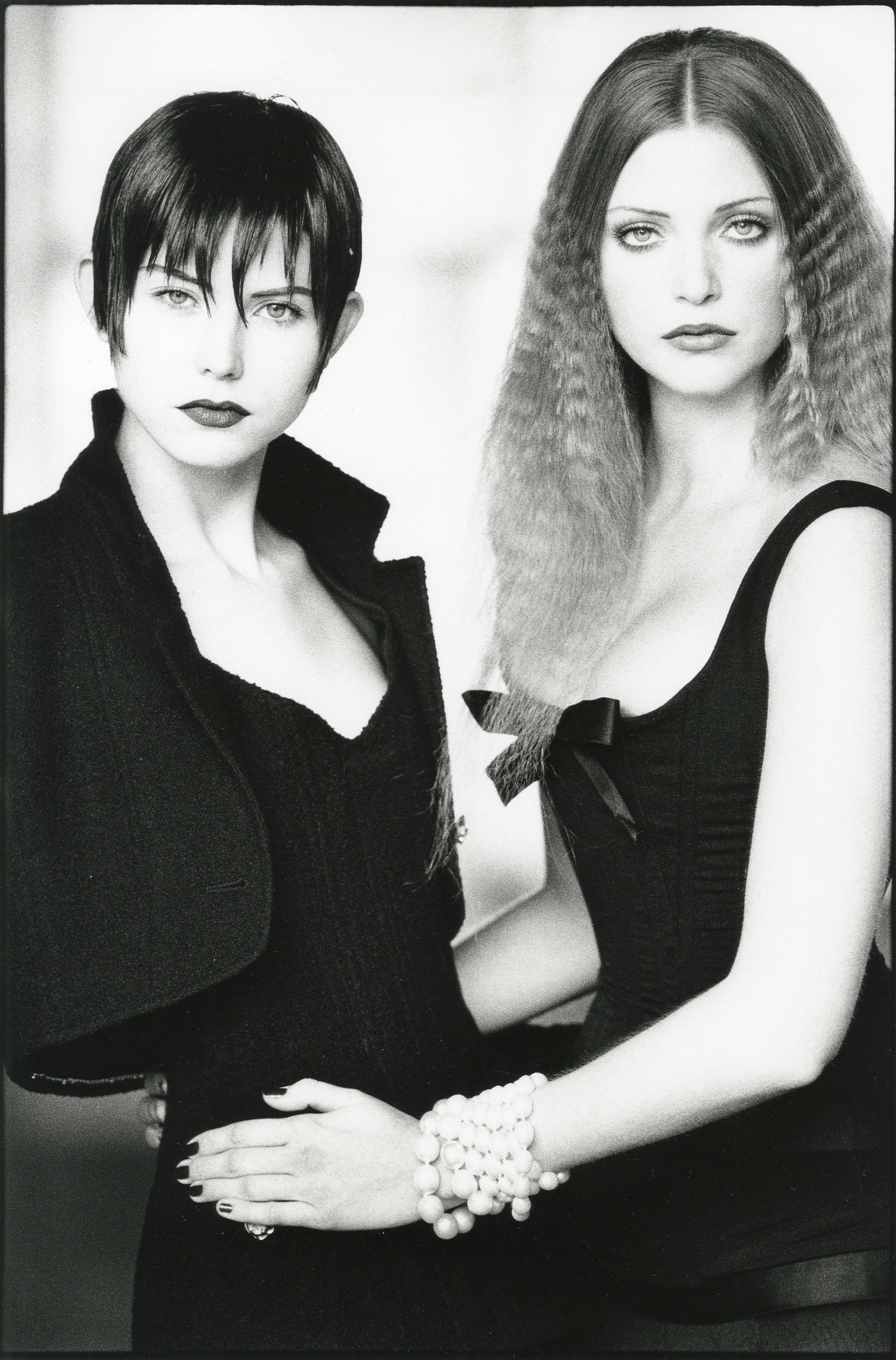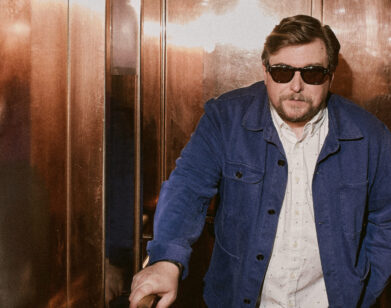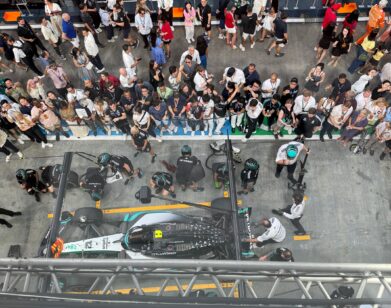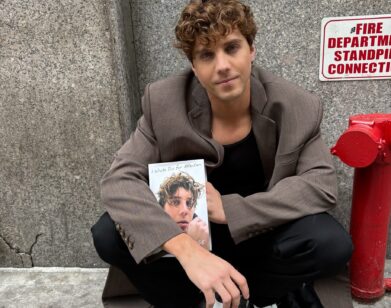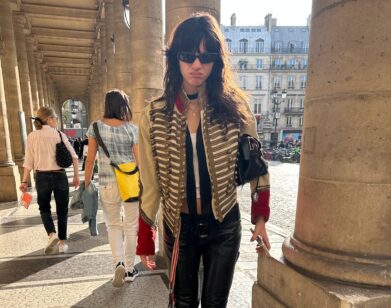Yohji’s Man in Black and White: Max Vadukul
Born in Nairobi, Kenya, to British parents, photographer Max Vadukul left home at 16 on an inspired quest to join the ranks of his heroes Richard Avedon, Irving Penn, and Helmut Newton. Thousands of shoots later, Vadukul’s fashion portraits in L’Uomo Vogue, Men’s Vogue, Harper’s Bazaar and iconic celebrity portraits for the covers of Rolling Stone and in Vanity Fair, have permeated the collective image bank.
Today, Vadukul shoots for The New Yorker, the second contract given to a photographer, after Richard Avedon, in the magazine’s 100-year history. Vadukul recently had his first U.S. solo show in Aspen, Colorado, at 212Gallery and is digitally archiving 30 years of work he plans to open to the public.
HILARY STUNDA: How did your career begin?
MAX VADUKUL: It’s a story. Even my son didn’t believe it. He wanted to fact-check it. So, the crazy American photographer, Jay Myrdal, was a former Captain in the army from Virginia. I had searched everywhere in London to work for someone because I left school very early—no college. I called everybody you could possibly call. They all said, “You’re too young. Forget it.”
Finally this American voice at the other end said, “Oh, you’re 15… I could use someone like you!” I was living two hours away so I hop on a train, get there, the London Muse. He was 7 feet tall, mustache, bald. Denim jacket and trousers. He said, “So, what do you know about photography?” I said I knew a lot. “I don’t need to know any of that. Are you interested in riding this unicycle?” He wheels this bike out with a furry seat. “Look, if you can ride this bike in two days, you got the job. I’ll train you.” It looked so easy.
I got on it. It was awful. He gave me a couple of tips. I took it home. For two days, I worked very hard on it. It was dangerous too. But I brought it back to him. I made a straight line then I stopped. He said, “You got it. You’re in! Your salary is 30 pounds a month.” 30 pounds a month meant I was spending everything on just the train ticket. But it didn’t matter. I was excited.
I made the coffee, ran around to the labs, answered the phone and did the bookkeeping—which was very important because you were learning what his expenses were, what he was billing, and then you balanced it.
I did that for about six months, then I got pissed off because he threw a sort of soft porn shoot. It was terrible. I was like, “Excuse me, what are you doing here with this?” And he was like, “This is how I make my money, man!” He was stuck in the ’70s. But I think he was shell-shocked as well. He had big problems that I couldn’t possibly understand at the time. He was a brilliant technician, used an 8 x 10 camera. Everything very precisely done. I said, “I know you’re making 500 pounds a page,” which was a lot of money in 1980, ’81. “But it’s not what I want to do.” He says, “What pays your bills? And I say, “My heroes are Avedon, William Klein, Helmut Newton, [Irving] Penn. This is not what I want to do.” He got very upset. “Listen, it took me six months to train you and now you’re useful, you’re going to disappear! Just because I do this. Come on, give me a break.” I said sorry. I left. It was very hard to find work because he had blacklisted me with every other photographer in London.
It didn’t matter. My determination was strong. I was doing any kind of job necessary. Eventually, I saved enough to get to America to do a first look, New York, which was always a dream of mine.
STUNDA: And it was Yohji Yamamoto who gave you your break.
VADUKUL: Yeah. He really put me on the map. That was it.
STUNDA: You met in Paris?
VADUKUL: Yohji was very strange. At the time, in 1985, magazines, pop culture, fashion photography was mostly about “I’m straight and I shoot this way” or “I’m gay, I shoot this way.” Suddenly this designer appeared out of nowhere. And it’s not sexy at all. It’s for the intellectual woman. So, when I had the opportunity to go to Paris and present my works to him, which was no more than 16 black and white images—he simply said, “You’re the next one to shoot my campaign. What do you want to do?”
You have to imagine. I’m wearing thrift clothing. I can’t believe what I’m hearing. I told him, “I want to go to New York. I want to shoot women as if they were just like birds in the streets… falling…” He nodded and said, “That’s it.” I saw him recently at the Victoria & Albert’s celebration of Yamamoto’s 30 years of work. I put my arm around him and said, “Do you realize, I’ve known you for almost 30 years, but I think we’ve only spoken 200 words.”
STUNDA: Yohji identifies with your vision. Has he supported other creative departures?
VADUKUL: The “Coming Soon” images are four films commissioned by Yohji. Those are special. Very scripted; dark. I wanted to do four different cities: Antwerp, London, Paris, Milano. In each place I wanted to work with a fresh, unknown young choreographer. I wanted to build stories with them. Real life stories. Some of them are fantastical. We worked on the material then got down to shooting it. It was fantastic—a chance to have no pressure but create art.
At the Victoria & Albert show I was asked, “How did you get pictures that look like this?” It doesn’t happen today because now everybody has to have permission. But what you’re looking at, is the product of somebody who has been given permission to work with raw materials and not be bothered. These are good examples of having carte blanche.
STUNDA: Have you reached a point in your career where you sense a paradigm shift?
VADUKUL: That is probably the best question anybody has asked me in ages. There’s a part of my mind that is working with the top magazines in the world—and that’s fine. There’s a part of me that is very off the leash. It’s been a remarkable journey to come from Kenya, and to have lived in different places. I don’t understand how all of this happened.
Now, I find I don’t want to ask for permission anymore. That’s the big difference. I am opening my archives to the world for the first time. I think the pictures have stood the test of time. I have been heavily criticized in the past at magazines for my black-and-white photography and the aggressive punch—I prefer to call it strong emotion—to the pictures. When everything is virtually disposable I feel these pictures really stand out.
I’ve been talking about doing a project that involves bicycles. I can’t tell you too much about it. Things completely not expected from me. I’m sketching ideas. They’re a completely different way of working than working with editors at a magazine where you’re always working with permission; approval. I’m willing to make a gentle separation. I still need to do that work since I enjoy it. It gives me access to a lot of energy in life and culture. But also, there’s a part of me that is dark, sarcastic, funny. Unpredictable, even naughty.
STUNDA: Do your relationships with your editors spur fresh ideas?
VADUKUL: I have an excellent relationship with Jodi Peckman at Rolling Stone. She’s a blast, absolutely a person who is forever young. I met her when I did the first album cover for Sting’s Dream of the Blue Turtles in Barbados. Jodi has an incredible feel my photography. She’ll say, “Come on Max, do that thing where you make them do this…!” A good editor can connect with the core signature of your photography and say this is what I really want from you. We’ve been able to get very good results on a few occasions. Gwen Stefani was one. I had her cracking glass bottles. The picture was dynamic. Gritty and grainy. It has to be real—even if it’s a reality I create.

